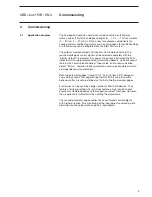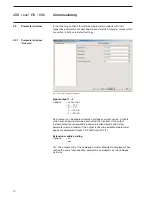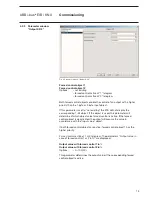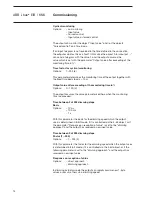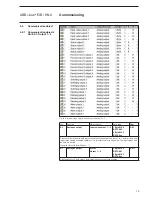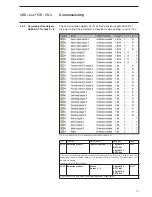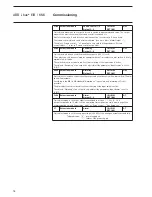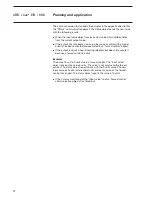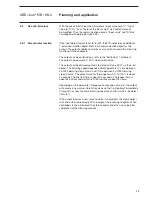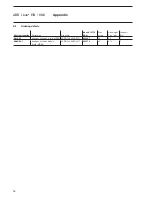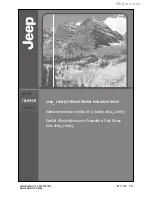
21
ABB i-bus
®
EIB / KNX
In the fewest of technical applications is the complete value range of the
2-byte floating point format actually fully utilised. At the same time there
is a whole range of components which actually convert a general analogue
variable such as voltage or current with their own conversion factor to
different physical variables.
In order to enable a conversion which is as simple and general as possible,
ETS indicates the three parameters when the input format of an output is
set to “16 bit”. With these parameters the conversion of the input value from
2-byte floating comma format to the suitable output signal is implemented.
Both parameters “Input value for 0 % output value” and “Input value for
100 % output value” are set so that they cover the required value range
as well as possible with the common parameter “Factor of input value”. In
order to obtain the highest possible internal resolution a small factor should
be selected.
Examples
The following parameters are recommended in order to receive a direct
implementation of the input value in volts with an output signal of 0 … 10 V:
Input value for 0 %:
0
Input value for 100 %:
1000
Input value factor:
0.01
The following parameters are recommended in order to receive implemen-
tation of the input value in millivolts with an output signal of 0 … 10 V:
Input value for 0 %:
0
Input value for 100 %:
10000
Input value factor:
1
The following parameters are recommended for a flap drive which operates
with an input voltage of 0 … 10 V and a mechanical operating angle of
0 … 90°, in order to directly utilise the angle:
Input value for 0 %:
0
Input value for 100 %:
9000
Input value factor:
0.01
5.2
Use of 16-bit values
Planning and application



